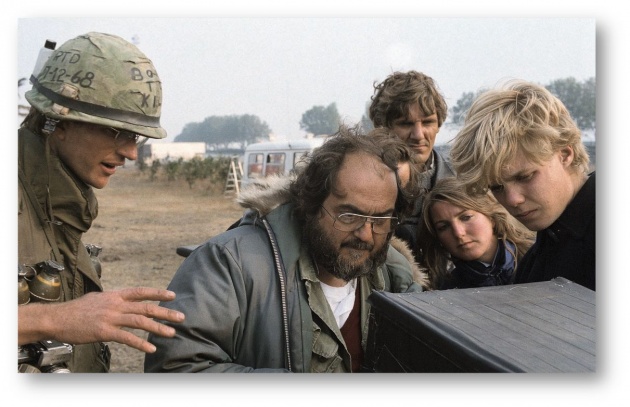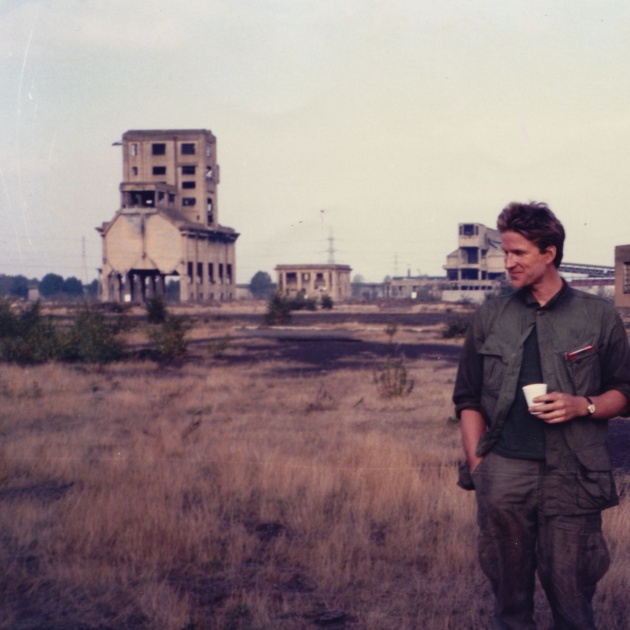This story, written by Matthew Modine, first appeared in The Loop Magazine Issue 13.
What is a film director? Is it just a person who yells “action” on a film set? Is he or she the one who controls the artistic, visual, and dramatic details of a film? Or does a director simply follow a script, a cookie-cutter set of rules and micromanage the gathered actors and technical crew? Are they just people that “shoot a schedule” to bring a film in on budget? The answer is, it depends on the director.
I’ve had the pleasure of working with some amazing directors. Most recently, Christopher Nolan, and over the years with John Schlesinger, Jonathan Demme, Alan Parker, Abel Ferrara, Oliver Stone, Alan J. Pakula, Robert Altman, and Stanley Kubrick, to name but a few. I’m often asked what these filmmakers have in common. If I was forced to use one word to describe an aspect each of them share, I’d say risk. The best directors take enormous risks with their creativity.
That’s not to say they’d jump out of an airplane without a parachute. Each of them comes to work with a clear understanding, vision, and agenda, always exploring and questioning the art of motion picture storytelling. They also listen to ideas from their actors and crew. Even though Kubrick would say, “One man writes a novel. One man writes a symphony. So it is essential that one man make a film,” I can tell you that he was an appreciative collaborator. The long list of credits on each of his films indubitably communicates that—while Kubrick was a filmmaker with a singular vision, he joined forces with hundreds of talented artists and technicians necessary to actualize his unparalleled vision. Cinema is the art of one man’s ability to collaborate with many.
 Photo caption: Watching video playback. This photo was taken by Executive Producer Jan Harlan. Jan is Stanley’s brother-in-law. On the right is Manuel Harlan, Jan’s son and Stanley’s nephew. Beckton Gas Works. Late Summer, 1985.
Photo caption: Watching video playback. This photo was taken by Executive Producer Jan Harlan. Jan is Stanley’s brother-in-law. On the right is Manuel Harlan, Jan’s son and Stanley’s nephew. Beckton Gas Works. Late Summer, 1985.
In 1985, while filming Full Metal Jacket, I was witness to and participated in Kubrick collaborations. If you saw things differently than him, he didn’t become obstinate or rude. Stanley would start a discussion involving the subject. Together you’d discuss the idea, thought, frustration until the most logical solution, the best possible resolution was reached. During the filming of Full Metal Jacket, I kept a detailed diary of my experience. In the early days of filming I was feeling quite lost and uncertain about how best to bring my character, Private Joker, to cinematic life.
Here is an excerpt from my personal diary:
LOCATION: Beckton Gas Works
DATE: October 1985
SUBJECT: Playing vs. Being
I walk around and try and find out where everyone is. I go to the temporary production office and am told that Stanley is looking at dailies. I walk back toward “Trailer-land” and decide not to. I know what the conversations there will be and would prefer not to participate in a bunch of negative bullshit.
I decide to explore the buildings that have been blown up and knocked down. Beckton is a big dead place. It’s so creepy. I get away from the buildings and go for a walk in a field of waist-high grass. I’m trying to think about Joker. Trying to imagine myself in his shoes. I see Stanley driving by in an army jeep. I think about hiding. Lying down in the tall grass. But it’s too late, he’s turning and driving toward me.

KUBRICK: What are you doing?
MODINE: Just walking around. Thinking.
I don’t know why, but I’m suddenly emotional. I try my best to hide it from him.
KUBRICK: Thinking about what?
MODINE: I don’t know. I just feel, I don’t know, it’s stupid.
KUBRICK: What?
MODINE: I just feel like I don’t know what I’m doing. I feel like I don’t know how to play Joker.
Stanley turns the jeep off. Looks down. Pulls on his beard. He thinks for a moment before saying…
KUBRICK: I don’t want you to play anything. I just want you to be yourself.
There is an awkward pause. I don’t know how to respond to that. How do you play yourself?
KUBRICK: Do you want a ride to set?
MODINE: No. I’ll walk.
Stanley drives off, and I think about what he said. The important part was his choice of words, how he interpreted my situation. There’s a tremendous difference between “play” and “be.”
Playing vs. Being. I don’t believe Kubrick chose the word “be” randomly. After all, “being” and existing in “a world of shit” are major themes in Full Metal Jacket. The philosopher William James had come up in conversations about 2001: A Space Odyssey. Discussions about how the universe is mostly a silent, vast, empty space of no-thing and that we would never be able to answer or build a logical bridge from this immeasurable no-thingness to our being. So why “play” a role? Be the character. Research everything you can about the role and understand the lines you are to speak. Be Private Joker.
John Keats wrote, “Beauty is truth, truth beauty.” I believe Keats was expressing that, in a world filled with lies and liars, it is the artist who endeavors to find truth in their creation. In a universe so incomprehensibly large and a world filled with so much inconsequential trifling and vain pursuit, it is the storyteller that provides a perspective, a point of light in the vast, inconceivable, and frightening darkness. It is the painter, the sculptor, the dancer, the storyteller, the playwright, the screenwriter, the film director, it is all the artists that strive to generate meaning and fabricate new ways of seeing and thinking and behaving and guiding the mass of humanity toward a more humane and peaceful world. The one thing artists share is a fear that they might waste their lives not taking risks. To have wasted their days not leaping into the void.
Matthew Modine is about to direct his second feature film, The Rocking Horsemen. His last short film, Jesus Was a Commie can be purchased on iTunes as part of a collection of his short films. You can also visit Film Annex to view many of his short films and videos for free. His book, Full Metal Jacket Diary, is now an award-winning interactive iPad app available on the iTunes Store.



